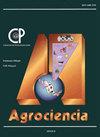在墨西哥索诺拉兰乔·圣胡贝托野生动物保护管理处,食物补充增加了骡鹿(Odocoileus hemionus eremicus)的保留率
IF 0.5
4区 农林科学
Q4 AGRICULTURE, MULTIDISCIPLINARY
引用次数: 0
摘要
在墨西哥北部干旱的野生动物保护管理单位(UMAs),人工食物和水补充项目很常见,以吸引和留住骡鹿作为优质的战利品。然而,实施这些行动的经济成本很高,而且没有令人信服的证据证明其有效性。本研究在墨西哥索诺拉州的UMA San Huberto使用相机陷阱评估了通过捕捉-标记-再捕捉来补充食物和水的效果。2015-2016年冬季,在62个光捕获站收集雄性骡鹿数量和检测历史,分布在4种补充处理:1)水和食物、2)水、3)食物和4)不补充。此外,为了评估天然植被对牧场食槽和饲料利用的影响,利用Landsat 8卫星图像计算归一化植被差指数。每个捕光站鹿数的log-Poisson回归模型发现,与不补充食物的站点相比,食物补充使骡鹿数量增加了42%。在所有处理中,植被生物量对饲料和水的使用频率没有影响。根据检测历史的多状态模型,在只接受食物补充的水域中,雄性骡鹿更有可能留在该处理中,而不是转移到其他两种处理(水和饲料或水)中的任何一种。这一发现表明,只补充食物对保留雄性骡鹿更有效。本文章由计算机程序翻译,如有差异,请以英文原文为准。
FOOD SUPPLEMENTATION INCREASES MULE DEER (Odocoileus hemionus eremicus) RETENTION AT THE RANCHO SAN HUBERTO WILDLIFE CONSERVATION MANAGEMENT UNIT, SONORA, MEXICO
Artificial food and water supplementation programs are common in Wildlife Conservation Management Units (UMAs) in arid northern Mexico to attract and retain mule deer as quality trophies. However, implementing these actions represents a high economic cost, and there is no convincing evidence of their effectiveness. This study evaluated the effect of food and water supplementation by capture-mark-recapture using camera traps at the UMA San Huberto, Sonora, Mexico. During the winter of 2015-2016, male mule deer counts and detection histories were collected at 62 photo-trapping stations spread across four supplementation treatments: 1) water and food, 2) water, 3) food, and 4) no supplementation. In addition, to assess the impact of natural vegetation on trough and feeder utilization on the ranch, the Normalized Difference Vegetation Index was calculated using Landsat 8 satellite images. A log-Poisson regression model for deer counts per photo-trapping station found that food supplementation increased mule deer numbers by 42 % when compared to stations without food supplementation. Vegetation biomass had no effect on the frequency of use of feeders and waterers in any of the treatments. According to the multistate model for detection histories, male mule deer at waterers receiving food-only supplementation are more likely to remain in that treatment than to move to either of the other two treatments (water and feed or water). This finding suggests that food-only supplementation is more effective in retaining male mule deer.
求助全文
通过发布文献求助,成功后即可免费获取论文全文。
去求助
来源期刊

Agrociencia
农林科学-农业综合
CiteScore
0.50
自引率
33.30%
发文量
51
审稿时长
18-36 weeks
期刊介绍:
AGROCIENCIA is a scientific journal created and sponsored by the Colegio de Postgraduados. Its main objective is the publication and diffusion of agricultural, animal and forestry sciences research results from mexican and foreign scientists. All contributions are peer reviewed. Starting in the year 2000, AGROCIENCIA became a bimonthly and fully bilingual journal (Spanish and English versions in the same issue). Since 2007 appears every month and a half (eight issues per year). In addition to the printed issues, the full content is available in electronic format.
 求助内容:
求助内容: 应助结果提醒方式:
应助结果提醒方式:


